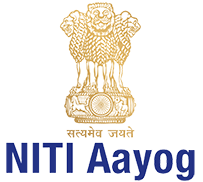
India’s growth trajectory: The Shakti In The Gati
Beyond 2022–23, if India grows at say 7%, does that mean labour productivity will grow at the same rate? Of course not. There will be jobs, much more than the 6 million in 5 years mentioned in Budget.
“Gati” is a Sanskrit word, meaning motion or path. “Shakti” is also a Sanskrit word, meaning energy or force. Gati Shakti can therefore be taken as a force that propels movement along a trajectory. There is a growth and development trajectory set for India, suddenly subjected to disruption because of the exogenous shock of the pandemic. As the Economic Survey for 2021–22 and FM’s Budget Speech for 2022–23 both pointed out, India has weathered the storm fairly well and growth recovery has been robust across sectors, absolute GDP surpassing the pre-pandemic level. Real growth in GDP in 2021–22 was 9.2% and in 2022-23, the Survey estimates real growth between 8% and 8.5%. That 8–8.5% doesn’t mean a medium-term growth trajectory in that range, since 2022–23 will benefit from revival of contact-intensive sectors and some services. The low base of 2021–22 will aid the growth number. What is the growth path beyond 2022–23 and what role does the Union Budget have in this? For 2022–23, the Budget estimates nominal GDP growth of 11.1%. This is a nominal growth number, real growth plus inflation, inflation measured by what economists call a GDP deflator. What’s the GDP deflator for India now? Probably around 4.5%, perhaps a little more. If it is a little more, this makes the argument stronger. With a deflator of 4.5%, real growth in 2022–23 will be 6.6%, significantly below the Survey forecast.
Read full article on The New Indian Express: https://www.newindianexpress.com/opinions/2022/feb/02/indias-growth-trajectory-the-shakti-in-the-gati-2414094.html



